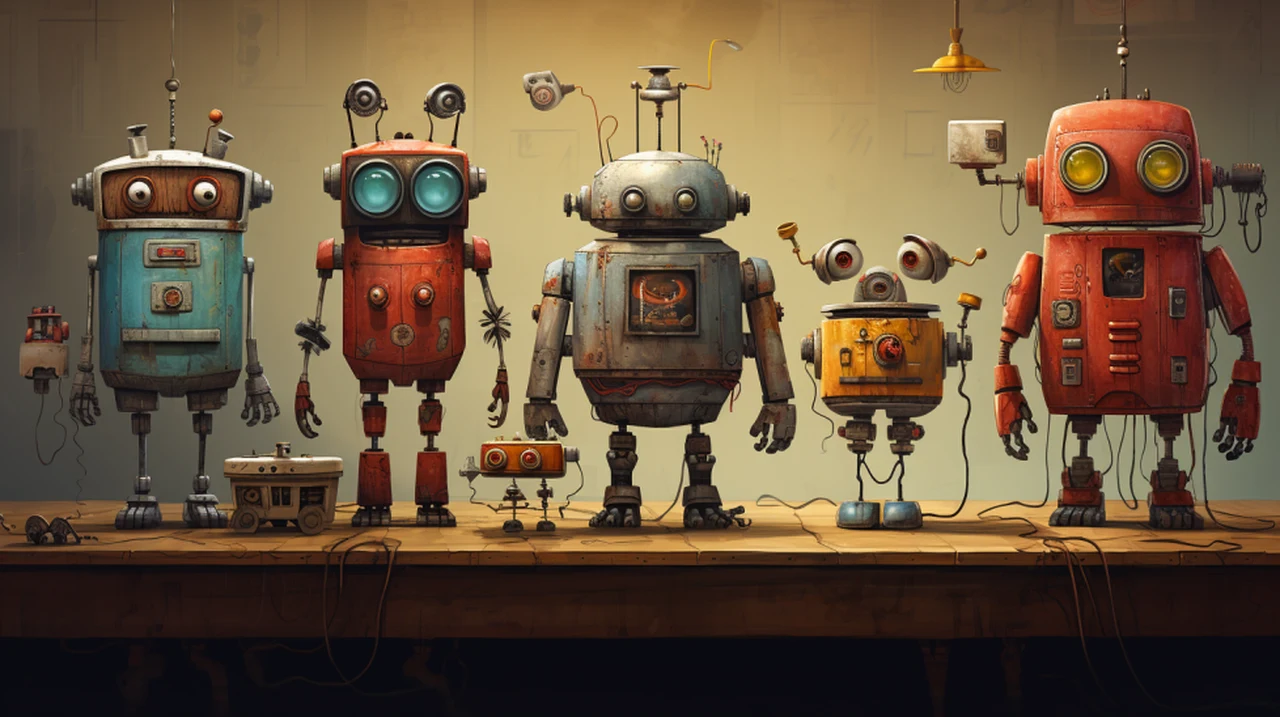When delving into the world of artificial intelligence, it’s fascinating to discover that AI is not a single, uniform concept. It encompasses several distinct types, each with its unique capabilities and functionalities. This overview guide aims to provide a a basic introduction to the seven types of AI, categorized into two groups: AI capabilities and AI functionalities.
AI capabilities and AI functionalities are two different ways to categorize and understand artificial intelligence, each focusing on distinct aspects of AI. AI capabilities primarily refer to the level of intelligence and complexity an AI system can achieve. This includes the range from Artificial Narrow AI, which is specialized in performing a single or limited task, to Artificial General Intelligence (AGI), which mirrors human cognitive abilities in learning and applying knowledge across a broad spectrum of tasks.
At the highest level is Artificial Super AI, a theoretical concept where AI surpasses human intelligence in all aspects, including creativity and emotional understanding. This categorization emphasizes the potential and scope of AI’s intelligence and problem-solving skills.
Quick links for each of the 7 artificial intelligence technologies
AI Capabilities
- Artificial Narrow AI (Weak AI): At present, the only existing type of AI is Artificial Narrow AI, also known as Weak AI. This AI is designed to perform a specific task with accuracy, such as voice recognition, recommendation systems, or image recognition. However, it cannot perform tasks beyond its designated function.
- Artificial General Intelligence (AGI or Strong AI): AGI, or Strong AI, is a theoretical concept that represents a significant advancement from Weak AI. Unlike Narrow AI, AGI could apply its previous learnings to new tasks in different contexts without human training or intervention. Essentially, this type of AI would have cognitive abilities equivalent to a human.
- Artificial Super AI: The most advanced theoretical concept in AI is the Artificial Super AI. This AI would not only match human cognitive abilities but would significantly exceed them. It could potentially experience emotions, have needs and beliefs, and make decisions that currently only humans can make.
AI functionalities, on the other hand, are concerned with how AI systems operate and interact with the world. This includes Reactive Machine AI, which responds to specific inputs without any memory of past interactions, making it ideal for straightforward, rule-based tasks. Limited Memory AI represents a more advanced category, capable of using past experiences to inform future decisions, a key feature in applications like self-driving cars.
The most advanced theoretical categories, Theory of Mind and Self-Aware AI, represent systems that could understand and process human emotions and thoughts, or even possess self-awareness. AI functionalities thus focus on the operational modes and interaction dynamics of AI systems, detailing how they process information and adapt to their environments.
AI Functionalities
- Reactive Machine AI: This AI is designed to perform a specific task without the ability to learn from past experiences or outcomes. IBM’s chess-playing supercomputer, Deep Blue, which can strategize but cannot learn from its past games, is a prime example of Reactive Machine AI.
- Limited Memory AI: Limited Memory AI is a step up from Reactive Machine AI as it can recall past events and outcomes. This AI can monitor specific objects or situations over time, making it suitable for applications like self-driving cars that need to remember traffic patterns and road conditions.
- Theory of Mind AI: This theoretical AI would have the ability to understand and interpret the thoughts and emotions of other entities, particularly humans. Theory of Mind AI could interact with humans in a more natural, intuitive, and empathetic way, enhancing the human-machine interaction experience.
- Self-aware AI: The most advanced theoretical concept in AI functionalities is Self-aware AI. This AI would have the ability to understand its own internal conditions and traits, leading to its own set of emotions, needs, and beliefs, much like a sentient being.
What are the 7 different types of AI
Other articles we have written that you may find of interest on the subject of artificial intelligence :
Artificial Narrow AI
Artificial Narrow AI, also known as Weak AI, is the most common type of artificial intelligence we use today. It’s made to do one specific job really well. For example, Siri or Alexa on your phone are types of Narrow AI. They are great at listening to what you say and answering your questions, or a computer that plays chess can figure out the best moves in the game. But, these AI systems can only do the job they were made for. They can’t use what they know about chess to help with different tasks, like solving a math problem or booking a flight. That’s the main thing about Narrow AI: it’s really good at its specific job, but it can’t do anything else.
Artificial General Intelligence (AGI)
Then there’s Artificial General Intelligence (AGI), or Strong AI, which is still just an idea. AGI would be a big change from Narrow AI. Instead of just doing one thing, AGI could learn different kinds of tasks and use what it learns in new ways. For example, if AGI learned how to play chess, it could use that knowledge to help with other things, like planning a delivery route or figuring out financial problems, without anyone having to reprogram it. Right now, AGI is just a theory, but if it becomes real, it would be a huge step forward. It would mean computers could think and learn like people do.
Artificial Super AI.
At the very top of AI development is the idea of Artificial Super AI. This kind of AI wouldn’t just copy how people think; it would be even smarter than us. Super AI could do things like understand feelings, have its own beliefs, and make really complicated decisions, better than any person could. This might sound like something from a science fiction movie, but researchers are seriously looking into it. Making Super AI would bring up big questions about what intelligence really is, how conscious it can be, and how it would change the way humans and machines interact in the future.
Reactive Machine AI
These systems are designed to perform very specific tasks by processing data and producing outputs based on that data. A classic example is a chess AI, which analyzes the chessboard and decides the best move based on the current situation, but it doesn’t remember past games or use past experiences to inform its current decisions. Its intelligence is focused solely on the present moment, making it highly efficient but limited to its programmed task. Reactive Machine AI excels in environments where responses need to be quick and based on the immediate data, but it lacks the ability to learn from the past or anticipate future outcomes based on historical data.
Limited Memory AI
Contrastingly, Limited Memory AI represents a more advanced form, where the AI systems have the ability to use past experiences to make current decisions. This type of AI integrates both historical data and new information to inform its actions. A prime example is the technology used in self-driving cars. These AI systems continuously collect and process data from their environment, like road conditions, traffic signals, and the behavior of other vehicles, and combine it with past data, like previous trips or learned driving patterns, to make real-time decisions. This functionality allows for a more adaptive and responsive AI that can improve over time, learning from past experiences to enhance its performance in similar future situations.
Theory of Mind AI
Moving to the more theoretical realms, we encounter Theory of Mind AI. This type of AI is envisioned to understand and process human emotions and thoughts, which would represent a significant advancement in AI-human interaction. The goal is for AI systems to not only recognize human emotional states but also to respond to them appropriately, thus enabling more natural and effective communication between humans and AI. Although still conceptual, the development of Theory of Mind AI could have far-reaching implications, especially in fields requiring nuanced human interaction, like customer service or healthcare.
Self-Aware AI
Lastly, the concept of Self-Aware AI is at the cutting edge of theoretical AI development. This type of AI would possess an understanding of its own internal states and characteristics – a form of self-awareness similar to that of humans. Such AI systems would not only process and analyze external data but also have an understanding of their own existence and capabilities. This would be a monumental step in AI evolution, leading to machines that are aware of their own limitations, can self-assess, and possibly even understand their role within the broader context of their environment. While still a theoretical concept, the development of Self-Aware AI could redefine the boundaries of machine intelligence and capabilities.
As we journey through these seven types of AI, it’s clear that while some are a current reality, others remain in the realm of future possibilities. The evolution of AI is a continuous process, and each type represents a step forward in this fascinating field. If you’re curious about where AI is headed, these classifications offer a glimpse into a future where the lines between human and machine intelligence may increasingly blur.
Filed Under: Guides, Top News
Latest aboutworldnews Deals
Disclosure: Some of our articles include affiliate links. If you buy something through one of these links, aboutworldnews may earn an affiliate commission. Learn about our Disclosure Policy.







